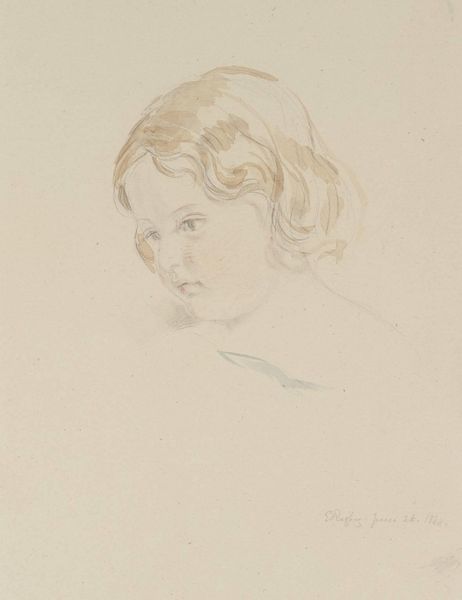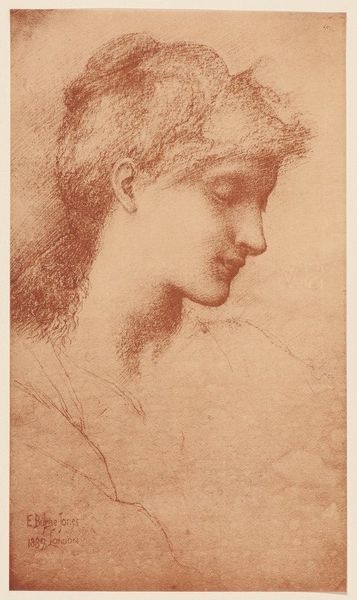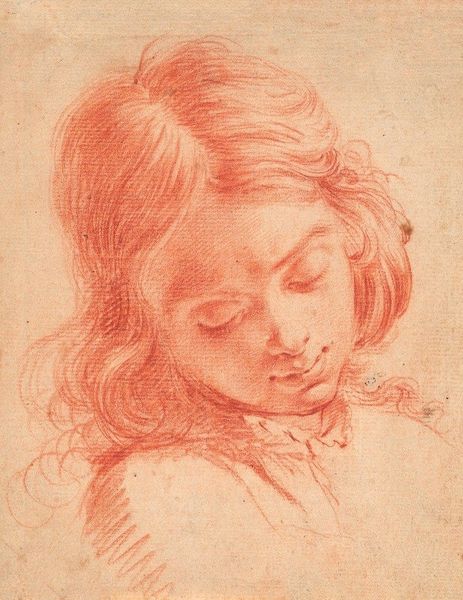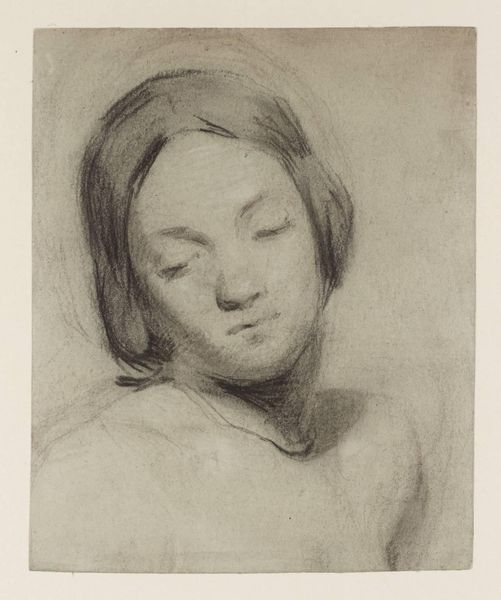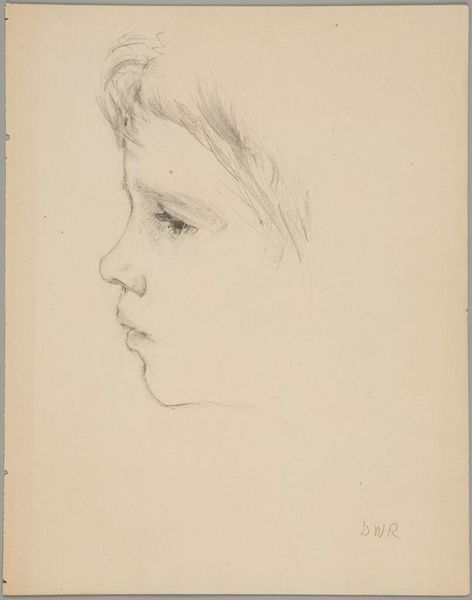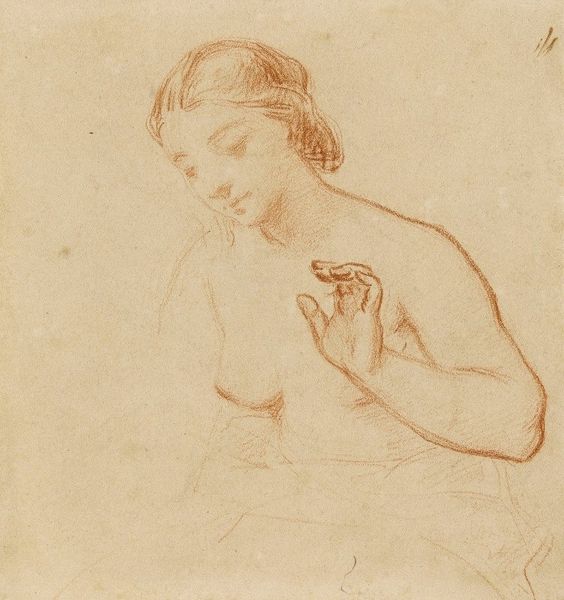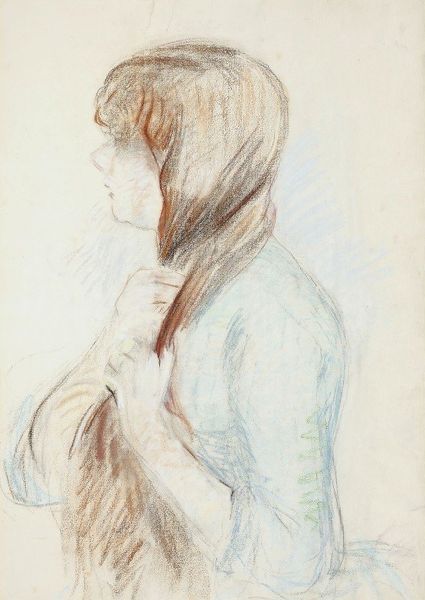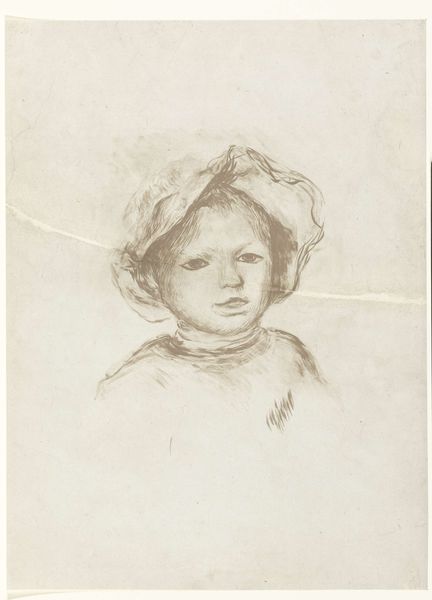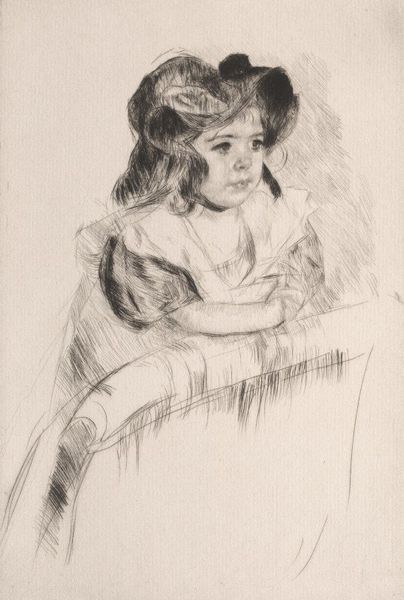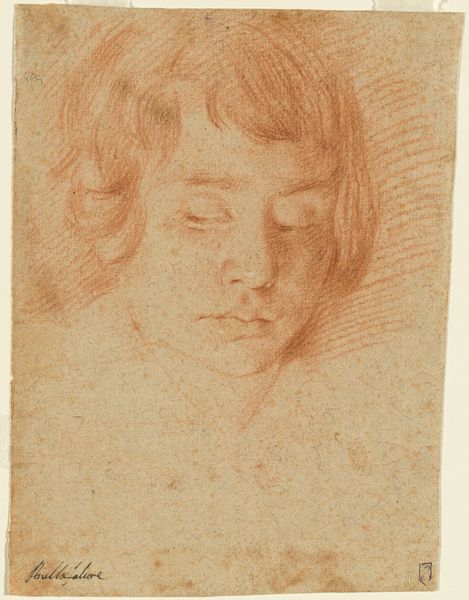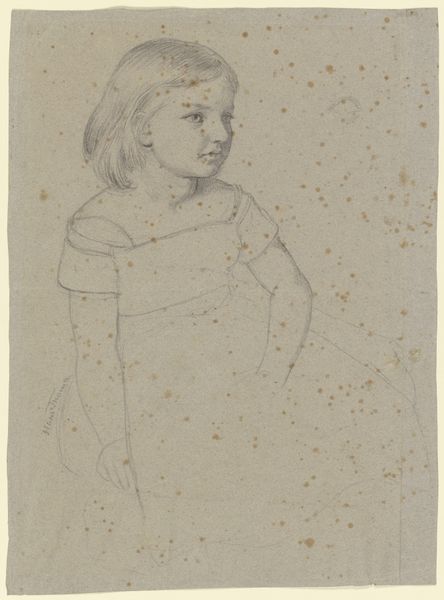
Copyright: Public Domain: Artvee
Curator: Before us, we have Pierre-Auguste Renoir’s "Profile of a Young Woman," a pencil drawing that dates to around 1910. Editor: There’s something incredibly tender about this work, isn't there? The limited palette creates a warmth and intimacy that immediately draws you in. It's remarkably soft. Curator: Indeed. Renoir masterfully utilizes the subtlety of pencil to define form and texture. Note the delicate hatching that models the planes of her face and the almost ethereal quality of the lines describing her hair. This careful modulation of tone creates depth within a decidedly limited register. Editor: It's also interesting to think about this work in relation to Renoir’s overall career. By 1910, he was firmly established as a leading figure of Impressionism, a movement that radically challenged traditional academic conventions. How might this portrait be seen as both an embrace of and a departure from the Impressionistic style? Curator: That’s a keen observation. On the one hand, Renoir’s commitment to capturing fleeting moments of light and shadow is evident in the overall impressionistic treatment of form. However, his emphasis on line and contour signals a departure from the broken brushstrokes and vibrant colors typically associated with Impressionism. I’d propose he emphasizes an individual's singular importance over broader social themes here. Editor: This connects, perhaps, with how portraits, particularly those of women, historically functioned within social and artistic discourse. Renoir, known for celebrating female beauty, presents us with a young woman whose gaze is averted. What does that refusal to meet the viewer signify? Curator: It could be argued that it preserves the integrity and interiority of the model. It's a choice that prevents easy objectification, thereby engaging her individuality with far greater emphasis than those images produced as society portraits. The viewer is asked to contemplate, not simply to consume her image. Editor: And that's what makes it so timeless, isn't it? It's more than just a depiction of a woman, it's an invitation to truly see her. Curator: I wholeheartedly agree. Its aesthetic achievement is undeniable, regardless of the portrait's socio-historic location.
Comments
No comments
Be the first to comment and join the conversation on the ultimate creative platform.

